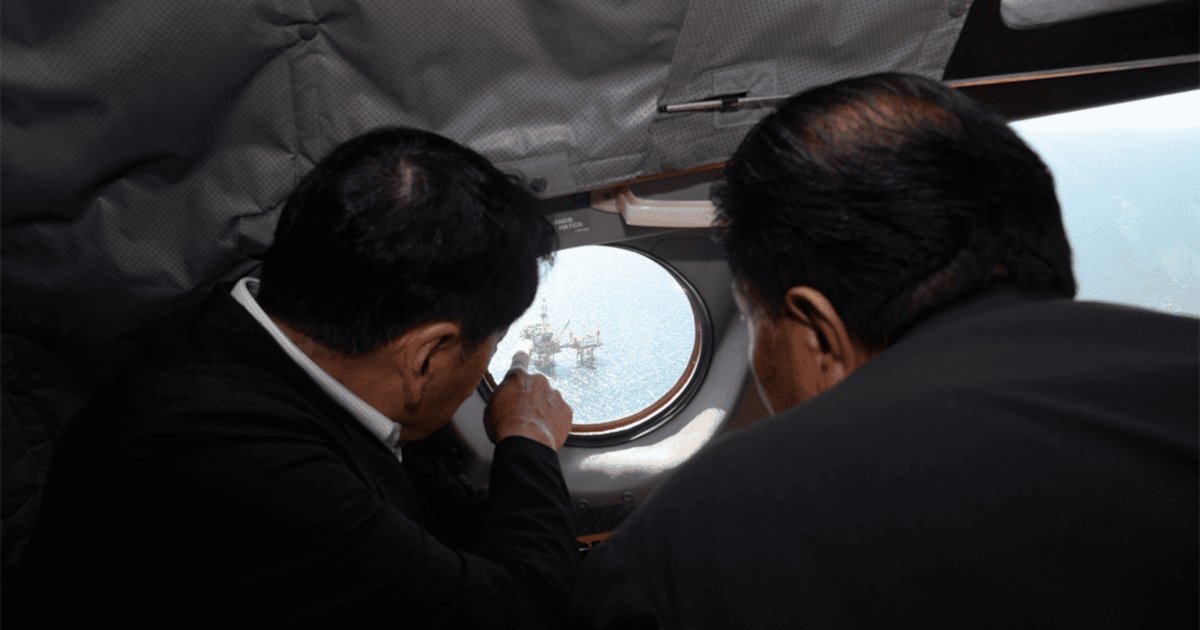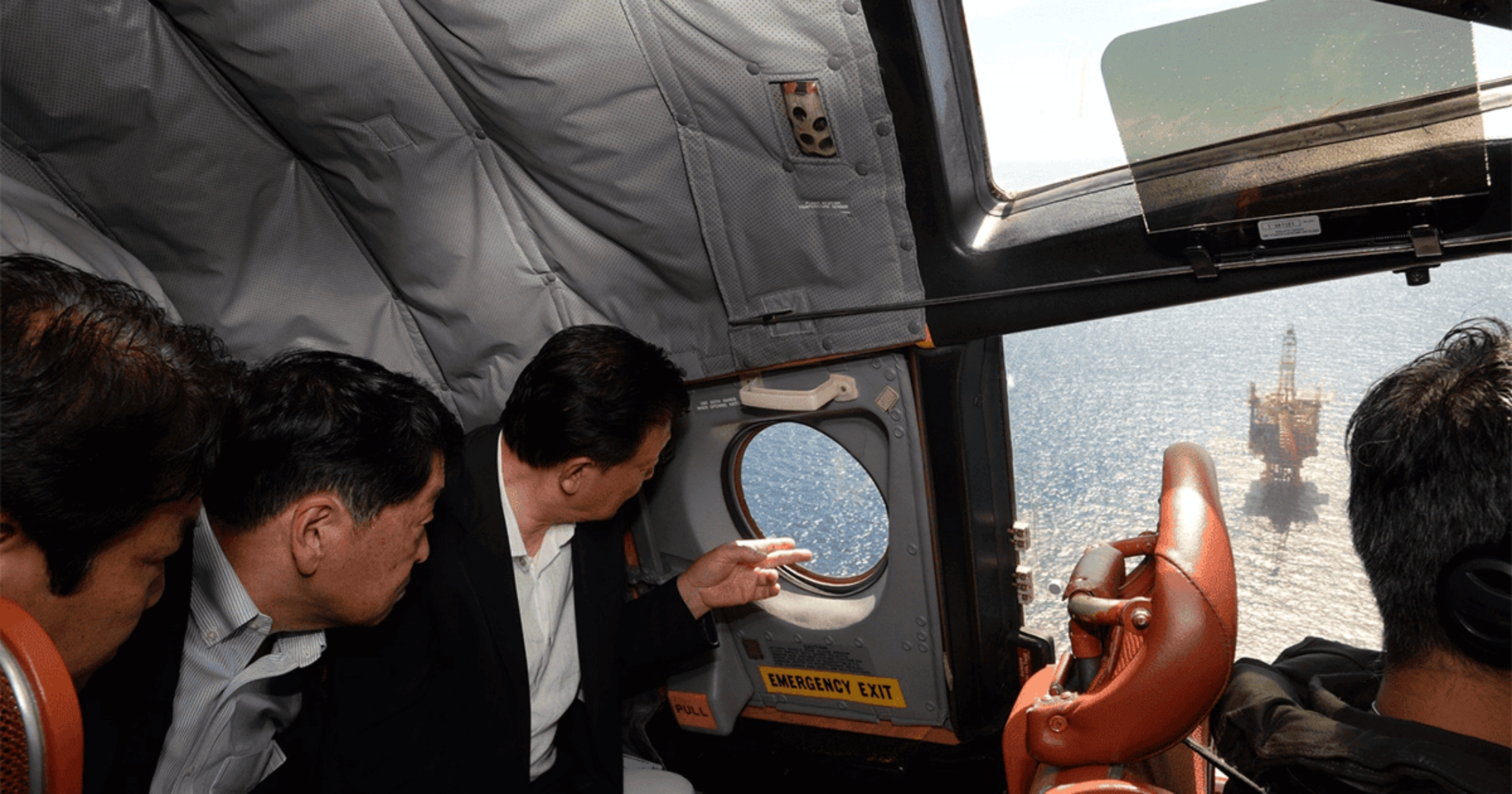Photos recently taken by a patrol aircraft provide a glimpse of China’s maritime activities in the contested East China Sea, which have alarmed its neighbor Japan—a U.S. ally.
Following Tokyo’s formal protest, Beijing said last week that its oil and gas exploration activities in the East China Sea were conducted in “undisputed waters” under its jurisdiction.
Newsweek has contacted the Chinese Foreign Ministry for further comment by email.
Why It Matters
Japan has accused China of advancing its “development activities” of natural resources in the East China Sea—which lies between the two countries—even though the boundaries of their 230-mile-wide exclusive economic zones (EEZs) have yet to be formally agreed upon.
According to the United Nations Convention on the Law of the Sea, a state enjoys sovereign rights to explore and exploit natural resources within its EEZ. Japan has identified 20 Chinese structures—including suspected oil rigs—in the East China Sea as of last month.
While China installed these structures on its side of the East China Sea’s median line—also known as the geographical equidistance line—Japan believed they were likely draining gas and oil reserves that straddle the line, arguing that the natural resources should be shared.
What To Know
On Sunday, several members of Japan’s ruling Liberal Democratic Party, including policy chief Itsunori Onodera, inspected the East China Sea’s median line and all the Chinese structures constructed in the region from a Japanese military P-3C patrol aircraft, the party said.
“In this area, the Chinese side is unilaterally developing gas fields, and the act of building related structures one after another, which increases tensions, continues,” the Japanese party said in a news release, adding that it “bears the responsibility” of defending the country.
Onodera said his party would closely monitor the situation to prevent China from using Japan’s resources, Jiji Press reported, citing a video released by the Liberal Democratic Party.
Official photos show the Japanese patrol aircraft conducting low-altitude flights around Chinese structures. It remains unclear whether China scrambled its fighter jets in response.
Japan’s Liberal Democratic Party
After receiving briefings from crew members of the patrol aircraft, the Japanese politicians warned that the situation in the East China Sea could pose a threat to Japan’s sovereignty.
Both sides also discussed the recent aerial encounter between the Japanese and Chinese militaries, which the Liberal Democratic Party called an “extremely dangerous” incident.
In early June, a Japanese P-3C patrol aircraft was intercepted by Chinese J-15 fighter jets over the Pacific Ocean while monitoring a Chinese aircraft carrier. At one point, the two aircraft were flying as close as 147 feet apart, which Tokyo said posed a risk of collision.

Japan’s Liberal Democratic Party
What People Are Saying
Japan’s Liberal Democratic Party said in a news release on Sunday: “In order to protect its territory and sovereignty, the Liberal Democratic Party will always keep an eye on the border frontlines, support those on the front lines of tensions, and work to strengthen deterrence in cooperation with the government.”
Japan’s Foreign Ministry said in a news release on June 24: “Under the circumstances pending maritime boundary delimitation, it is extremely regrettable that China is advancing unilateral development, even on the China side of the geographical equidistance line.”
Guo Jiakun, a spokesperson for the Chinese Foreign Ministry, said at a news conference on June 25: “China upholds and remains committed to the comprehensive and effective implementation of the principled consensus on the East China Sea issue. We hope Japan will work in the same direction with China and make an effort to resume the intergovernmental negotiation between the two countries at an early date.”
What Happens Next
It remains to be seen whether China will expand its activities near the median line in the East China Sea by constructing additional energy exploration structures.

